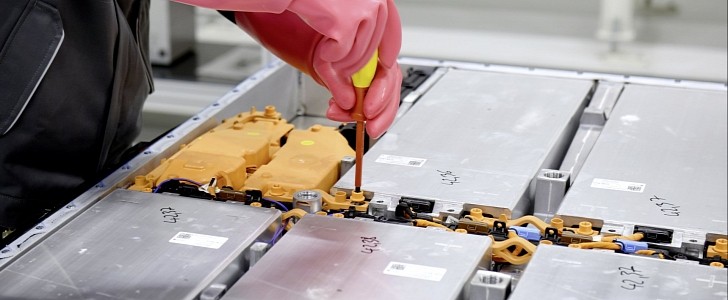The Department of Energy plans to launch a new battery recycling program and wants to learn how to best invest the $335 million from the Bipartisan Infrastructure Law passed last year. Although current EV batteries are still young, recycling will become crucial to the Li-Ion batteries’ lifecycle.
The Li-Ion batteries that power every electric vehicle on the market have a finite life. After that, they must be recycled to recover the precious materials inside. We already know from the pioneers of battery recycling that used Li-Ion batteries are a gold mine. Being relatively new, there aren’t many Li-Ion batteries to recycle just yet, but the situation will change fast in the coming years.
It’s good that the Administration is already considering how to deal with the EV battery packs at the end of their lifecycle. This is especially important considering the scarcity of raw materials, which can be 100% recovered from used batteries. Recycling existing cells keeps them from harming the environment and puts their ingredients back into the supply chain. As Elon Musk said, these are better than ore for making new batteries.
The Bipartisan Infrastructure Bill plans over $7 billion in investments to build a domestic battery supply chain. This includes $335 million for Li-ion battery recycling programs the government has no idea about. This is why the Department of Energy (DOE) issued a Request for Information to gather input from the public regarding the best way to invest the money.
DOE wants to assess the whole chain, from collecting the batteries to harvesting the valuable materials inside. It also wants to encourage recycling to prevent the cells from ending in landfills. The recycling industry is still in its infancy, but so are the EV batteries that reached the end of life. It might not be obvious, but Li-Ion batteries have an incredibly long lifecycle.
When used inside electric vehicles, they are usually replaced when they lose about 20% of their initial capacity. Even though they are not practical to power an EV, it doesn’t mean they are unusable. In fact, there’s still plenty of capacity left for applications like solar energy storage. It might take decades before a Li-Ion battery pack becomes unusable.
It’s good that the Administration is already considering how to deal with the EV battery packs at the end of their lifecycle. This is especially important considering the scarcity of raw materials, which can be 100% recovered from used batteries. Recycling existing cells keeps them from harming the environment and puts their ingredients back into the supply chain. As Elon Musk said, these are better than ore for making new batteries.
The Bipartisan Infrastructure Bill plans over $7 billion in investments to build a domestic battery supply chain. This includes $335 million for Li-ion battery recycling programs the government has no idea about. This is why the Department of Energy (DOE) issued a Request for Information to gather input from the public regarding the best way to invest the money.
DOE wants to assess the whole chain, from collecting the batteries to harvesting the valuable materials inside. It also wants to encourage recycling to prevent the cells from ending in landfills. The recycling industry is still in its infancy, but so are the EV batteries that reached the end of life. It might not be obvious, but Li-Ion batteries have an incredibly long lifecycle.
When used inside electric vehicles, they are usually replaced when they lose about 20% of their initial capacity. Even though they are not practical to power an EV, it doesn’t mean they are unusable. In fact, there’s still plenty of capacity left for applications like solar energy storage. It might take decades before a Li-Ion battery pack becomes unusable.






